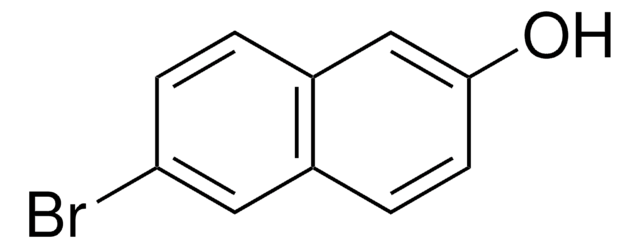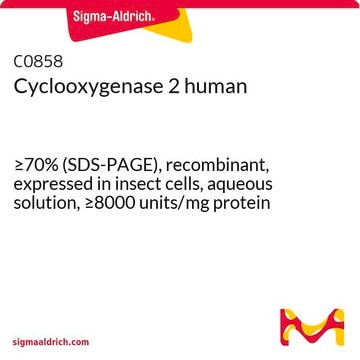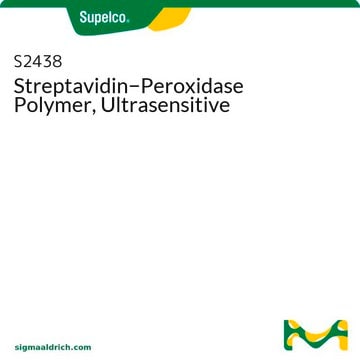C8890
4-Chloro-1-naphthol
horseradish peroxidase substrate, fluorogenic, ≥98% (GC), crystalline
Synonym(s):
4-chloronaphthalen-1-ol
About This Item
Recommended Products
product name
4-Chloro-1-naphthol, crystalline
Assay
≥98% (GC)
form
crystalline
mp
118-121 °C (lit.)
solubility
acetone: 50 mg/mL, clear, colorless to very faintly brown
storage temp.
−20°C
SMILES string
Oc1ccc(Cl)c2ccccc12
InChI
1S/C10H7ClO/c11-9-5-6-10(12)8-4-2-1-3-7(8)9/h1-6,12H
InChI key
LVSPDZAGCBEQAV-UHFFFAOYSA-N
Looking for similar products? Visit Product Comparison Guide
Related Categories
Application
Biochem/physiol Actions
Substrates
Storage Class Code
11 - Combustible Solids
WGK
WGK 3
Flash Point(F)
Not applicable
Flash Point(C)
Not applicable
Personal Protective Equipment
Certificates of Analysis (COA)
Search for Certificates of Analysis (COA) by entering the products Lot/Batch Number. Lot and Batch Numbers can be found on a product’s label following the words ‘Lot’ or ‘Batch’.
Already Own This Product?
Find documentation for the products that you have recently purchased in the Document Library.
Customers Also Viewed
Our team of scientists has experience in all areas of research including Life Science, Material Science, Chemical Synthesis, Chromatography, Analytical and many others.
Contact Technical Service











